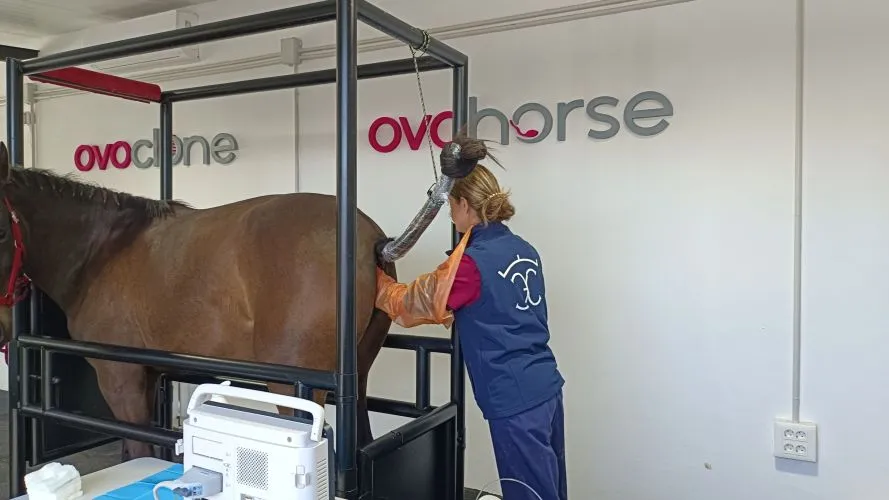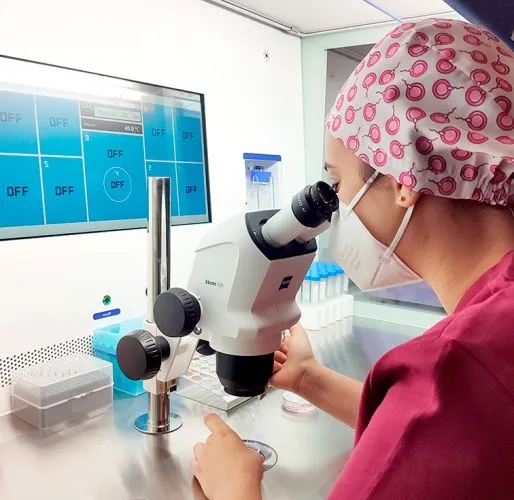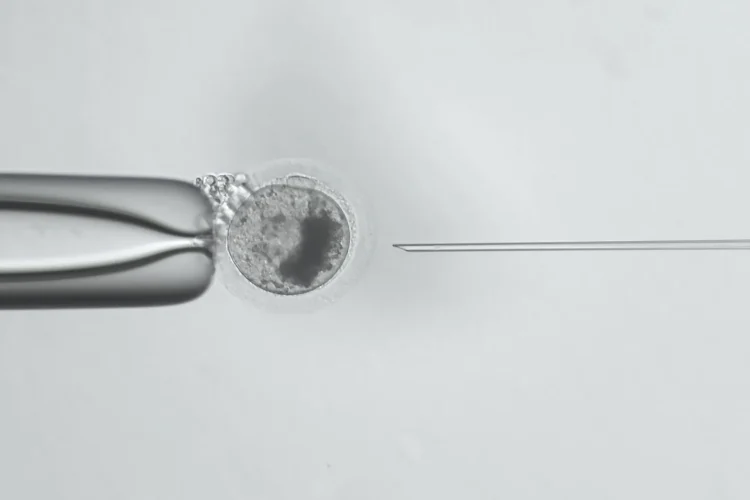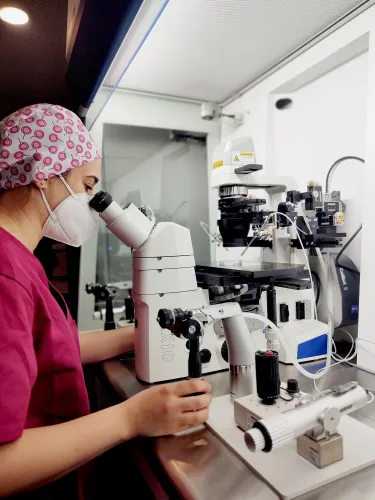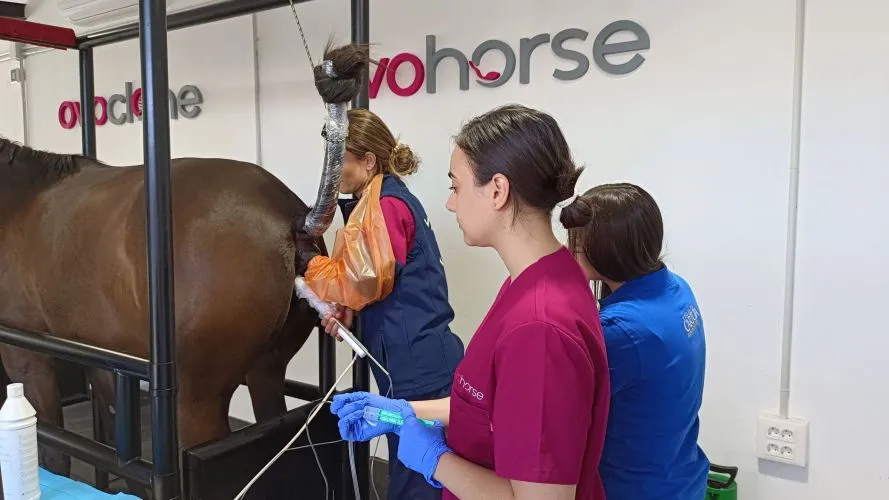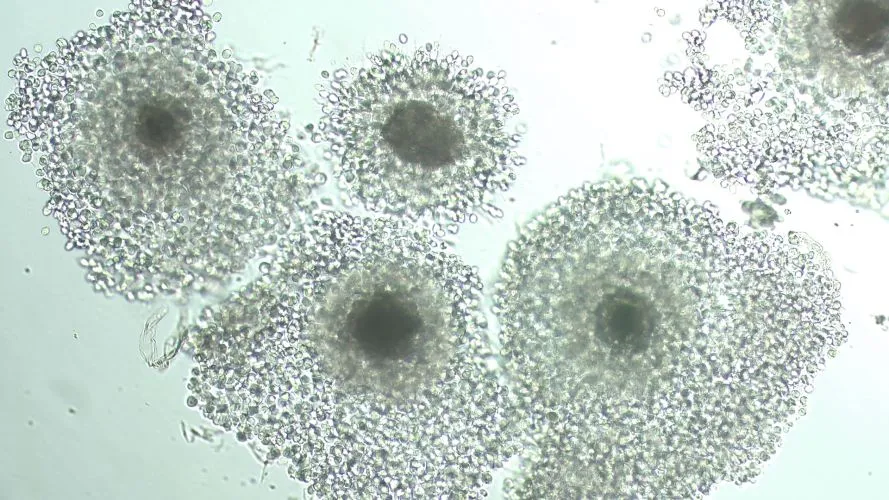PRODUCE EMBRYOS ALL YEAR ROUND
What is the OPU-ICSI technique?
A technique commercially applied in equines for the in vitro production of embryos from genetically superior mares and/or stallions. Through follicular aspiration (OPU), oocytes are extracted from donor mares for subsequent Intracytoplasmic Sperm Injection (ICSI), where a single sperm is injected into each oocyte.
HOW IS IT DONE?
OPU – Follicular Aspiration
Follicular aspiration (OPU) is the process by which oocytes (eggs) are extracted directly from a mare’s ovaries transvaginally using a guide and an ultrasound probe (TVA). The mare is sedated and the procedure takes between 20 and 60 minutes, depending on the number of follicles present in the ovaries.
Laboratory: oocyte maturation, sperm injection (ICSI), embryo culture and vitrification
Oocyte Maturation: The oocytes obtained after aspiration mature in the laboratory until they are suitable for fertilisation.
Sperm Injection: A single sperm is injected into each mature oocyte using the ICSI (Intracytoplasmic Sperm Injection) technique.
Embryo Culture: The injected oocytes are cultured in the laboratory until they reach the embryo stage.
Vitrification: This is the technique used to freeze embryos. All resulting embryos are vitrified and stored in liquid nitrogen for later transfer into a recipient mare.
Vitrified embryos allow both the client and the vet to schedule, prepare and select the best recipient. In addition, it is possible to plan the transfer for the most optimal foaling dates.
Embryo transfer and foal birth
Transfer: The embryos are warmed and transferred to a synchronised recipient mare (on Day 4/Day 5 post-ovulation).
Birth: After the 11-month gestation period, the recipient mare will give birth to the foal.
Performing OPU-ICSI
In Mares:
1. Older mares that no longer respond to conventional transfer or insemination programmes.
2. Mares with acquired reproductive issues: endometritis; problems with the uterus, oviduct or cervix.
3. OPU-ICSI can be performed all year round, during any phase of the donor’s reproductive cycle, as long as follicles are present.
4. Mares that develop follicular waves but do not ovulate.
In Stallions:
1. Stallions with poor sperm quality and motility.
2. Stallions with low availability of straws or extremely high costs: for ICSI, we cut the straw and use 1/10 (approximately 1 cm) per session.
Frequently Asked Questions about OPU-ICSI
What is the average number of embryos produced per OPU-ICSI session?
Average production of 1-3 embryos per OPU.
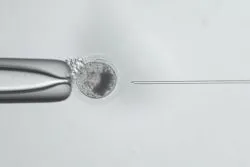
Factors that influence the number of embryos produced in an OPU-ICSI session
- Quality of oocytes, which can be affected by the advanced age of donors, medication use, illnesses, inadequate nutrition, and individual effects.
- Quality of sperm, which can be affected by illnesses, individual subfertility effects, use of medications that harm spermatogenesis, and improper storage of straws.
- Preparation and follicular control of donors: the more follicles in the ovary, the higher the chances of embryo production (although quantity is not the same as quality).
What is the minimum interval between one Follicular Aspiration and the next?
Although this may vary depending on the mare, we recommend a minimum interval of 14 days. This time is necessary for the donor mare’s ovary to present a sufficient number of follicles to be aspirated again. At Ovohorse, we monitor and control the ovaries using ultrasound to assess the optimal timing, which ideally is when there are more than 10 follicles present.
Are there risks for the donor mare during the Follicular Aspiration (OPU) process?
As with any invasive technique, there are risks during or after the follicular aspiration procedure. Our team of veterinarians is trained and skilled to minimise risks, activating action protocols as quickly and effectively as possible.
Do vitrified embryos have good pregnancy success rates?
Yes. The quality of embryos marketed by Ovohorse, whether fresh or vitrified, is the same: grade 1. Vitrification also allows scheduling, preparation, and selection of the best recipient, increasing the chances of better pregnancy outcomes.
Is OPU-ICSI a reproductive biotechnology meant to replace Conventional Embryo Transfer (flushing)?
No! OPU-ICSI and Conventional Embryo Transfer (flushing) are biotechnologies with different objectives and indications.
OPU-ICSI arises as an alternative option to solve problems such as: embryo production from mares that, due to advanced age or acquired reproductive issues, no longer produce embryos conventionally; optimisation of the use of high-cost or scarce market straws; allowing the use of stallion straws with low motility; and enabling embryo production throughout the year.
In fact, both techniques can be applied together, provided there is appropriate scheduling of the OPU and flushing dates.
- An alternative for producing embryos from mares that no longer produce embryos conventionally, either due to advanced age or acquired reproductive issues.
- Allows optimisation of the use of straws with low market availability or high commercial cost, as approximately 1 cm of the straw is used per OPU session.
- Adaptation to the mare’s competition schedule.
- Use of semen doses from subfertile and infertile stallions since fertilisation is performed in the laboratory.
- Allows cryopreservation (freezing) of produced embryos to transfer them at the planned and desired time.


